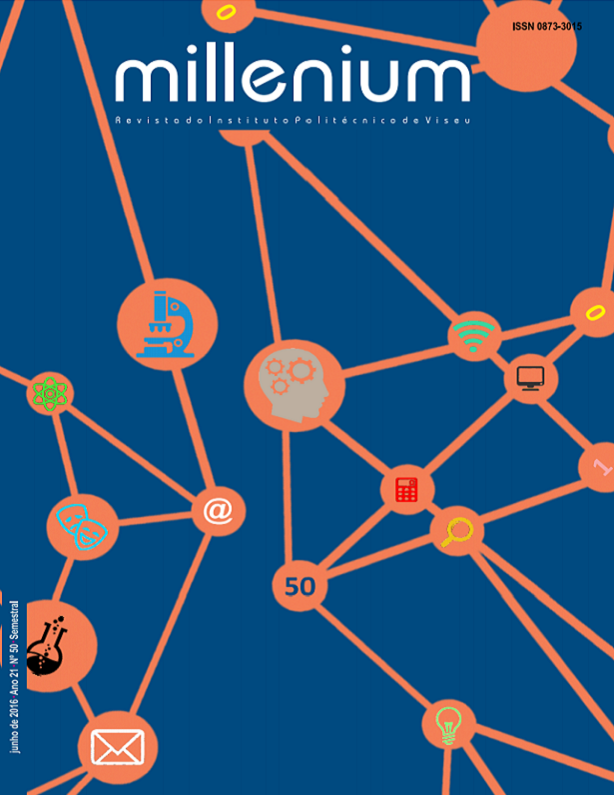Proficiency and manual asymmetry in young people with trisomy 21 in two manual dexterity tasks
Keywords:
trisomy 21, motor skill, functional lateralityAbstract
Objective: To evaluate the proficiency and manual asymmetry of individuals with Trisomy 21 (T21) in two manual dexterity tests: global and fine. Methods: Participants were 21 individuals with T21 between 17 and 45 years, 13 right-handed, residents in the city of Porto, Portugal. For evaluating the overall handedness (DMG) we used the Minnesota Manual Dexterity Test (placement version) and for fine manual dexterity (DMF), the Purdue Pegboard.
Results: In DMF test statistically significant differences were not observed (t (20) = 1.23, p = 0.233) between the hands, but in the DMG test the difference between hands reach statistical significance (t (20) = 3.128, p = 0.005), not being the preferred hand (145.22 sec ± 53.42) faster than the preferred hand (156.16 sec ± 59.99). The Asymmetry Index Manual for each task was conducted, however, did not reveal statistically significant (t (20) = - 1.003, p = 0.328). Conclusion: The best proficiency with the hand not preferred in DMG task may be related to peculiar characteristics to this population, such as difficulties in selective motor, which impoverish the performance for either hand, or with other factors to be investigated. The data suggest that the task performed by DMG and DMF and people with T21 are not influenced by manual preference.
Downloads
References
• Associação Médica Mundial - AMM/WMA (2000). Declaração de Helsínquia. Disponível em: <https://www.ufca.edu.br/portal/documentos-online/874--660>. Consultada em 15 de janeiro de 2016.
• Batheja, M. & McManus, I. C. (1985). Handedness in the Mentally Handicapped. Developmental Medicine &Child Neurology, 27, 63-68.
• Bryden, M. P., Sing, M., Steenhuis, R. E. & Clarkson, K. L. (1994). A Behavioral Measure of Hand Preference as Opposed to Hand Skill. Neurophysichologia, 3(8), 991-994. doi: 10.1016/0028-3932(94)90048-5
• Elliott, D., Weeks, D. J. & Chua, R. (1994). Anomalous Cerebral Lateralization and Down Syndrome. Brain and Cognition, 26, 191-195. doi: 10.1006/brcg.1994.1050
• Esteves, A. C., Reis, D. C., Caldeira, R. M., Leite, R. M., Moro, A. R. P. & Júnior, N. G. B. (2005). Força de preensão, lateralidade, sexo e características antropométricas da mão de crianças em idade escolar. Revista Brasileira de Cineantropometria e Desempenho Humano, 7(2), 69-75.
• Gérard-Desplanches, A., Derulle, C., Stefanini, S., Ayoun, C., Volterra, V., Vicari, S., Fish, G. & Carlier, M. (2006). Laterality in Persons with Intellectual Disability II. Hand, Foot, Ear, and, Eye in Persons with Trissomy 21 and Williams-Beuren Syndrome. Developmental Psychobiology, 48(6), 482-491. doi: 10.1002/dev.20163
• Groen, M. A., Yasin, I., Laws, G., Barry, J. G. & Bishop, D. V. M. (2008). Weak Hand Preference in Children with Down Syndrome Is Associated with Language Deficits. Developmental Psychobiology, 50(3), 242-250. doi: 10.1002/dev.20291
• Guimarães, R., Blascovi-Assis, S. M. & Macedo, E. C. (2012). Efeito da dominância lateral no desempenho da destreza manual em pessoas com síndrome de Down. Acta Fisiátrica,19(1), 6-10. doi: 10.5935/0104-7795.20120002
• Lafayette Instrument (1998). The Minnesota Dextery Test: Examiner`s Manual. Model 32023. Test Administrator’s Manual Revised Edition.
• Lafayette Instrument (2002). Purdue Pegboard Test: User Instructions. Model 32020.
• Mathiowetz, V., Volland, G., Kashman, N. & Weber, K. (1985). Adult norms for the Box and Block Test of manual dexterity. American Journal Occupacional Therapy, 39(6), 386-91. doi: 10.5014/ajot.39.6.386 • • Mulvey, G. M., Ringenbach, S. D. R. & Jung, M. L. (2011). Reversal of handedness effects on bimanual coordination in adults with Down syndrome. Journal of Intellectual Disability Research, 55(10), 998-1001. doi: 10.1111/j.1365-2788.2011.01457.x
• Rodrigues, P., Lima, E., Vasconcelos, M. O., Barreiros, M. O. & Botelho, M. (2011). Efeito da velocidade do estímulo no desempenho de uma tarefa de antecipação-coincidência em destros e canhotos. Revisa Brasileira de Educação Física e Esporte, 25(3), 487-496. doi: http://dx.doi.org/10.1590/S1807-55092011000300012
• Teixeira, L. A. & Paroli, R. (2000). Assimetrias Laterais em Ações Motoras: Preferência versus Desempenho. Motriz, 6(1), 1-8.
• Van Strien, J. W. (1992). Classificative van links-enrechts-hangige proefperrsonen. Nederlands Tijdschrifvoor de Psychologie, 47, 88-92.
Downloads
Published
How to Cite
Issue
Section
License
Authors who submit proposals for this journal agree to the following terms:
a) Articles are published under the Licença Creative Commons (CC BY 4.0), in full open-access, without any cost or fees of any kind to the author or the reader;
b) The authors retain copyright and grant the journal right of first publication, allowing the free sharing of work, provided it is correctly attributed the authorship and initial publication in this journal;
c) The authors are permitted to take on additional contracts separately for non-exclusive distribution of the version of the work published in this journal (eg, post it to an institutional repository or as a book), with an acknowledgment of its initial publication in this journal;
d) Authors are permitted and encouraged to publish and distribute their work online (eg, in institutional repositories or on their website) as it can lead to productive exchanges, as well as increase the impact and citation of published work
Documents required for submission
Article template (Editable format)















